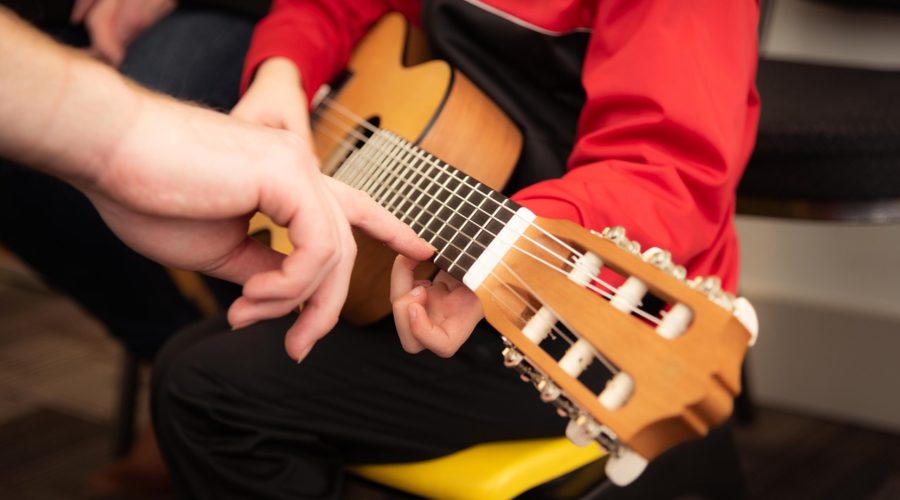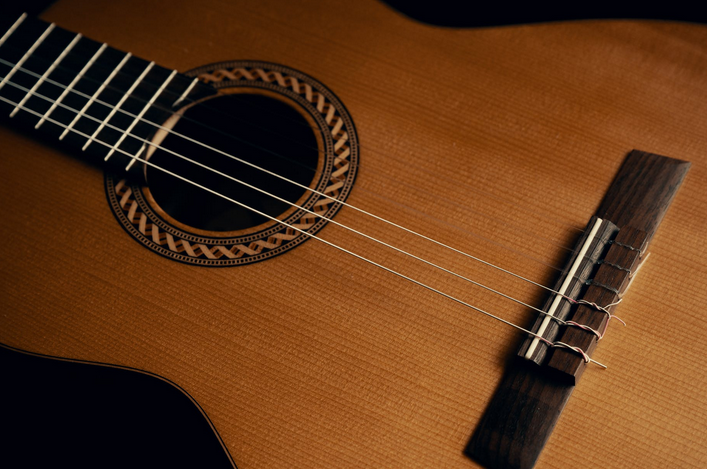It’s no secret that learning to play guitar can provide a child with a number of remarkable benefits. Not only does it help improve hand-eye coordination, but it can also boost self-confidence and encourage creativity. In some cases, learning to play guitar can even be a way for children to destress and express themselves in a meaningful way. This is especially true if they have the right guitar for small hands. However, not all children are immediately enthused about learning how to play the instrument. If your child is having difficulty getting interested in the task at hand, there are ways you can help them become more enthusiastic about it. Let’s take a closer look at them.
Guide Them in Choosing the Best Guitar for Themselves
 In helping your child take their guitar playing to the next level, the first thing is to find the right instrument. This will help ensure that they are comfortable with it and that it’s well-suited for their skill level. When looking for a guitar, make sure to keep in mind your child’s age and size.
In helping your child take their guitar playing to the next level, the first thing is to find the right instrument. This will help ensure that they are comfortable with it and that it’s well-suited for their skill level. When looking for a guitar, make sure to keep in mind your child’s age and size.
For example, small children may need a smaller guitar with shorter strings and narrower fretboards. Encourage your child to try out several different guitars to find the one that feels best for them.
Set Up a Regular Practice Routine
Creating a regular practice routine is essential for your child to take learning the guitar seriously. Not only will this help ensure that they stay motivated, but it will also ensure that they continue to improve over time. Keep the practice sessions consistent so your child knows when to expect them. You can even set aside a designated area in your home where they can practice without distractions. It would help if you also planned your lesson according to your child’s learning style. For example, some children prefer visual instruction, while others do better with auditory instruction.

Let Them Choose Their Own Music
When learning how to play guitar, it’s remarkable to see your child picking their music, which shows their interest in music. So let them choose. This will help make the process more fun and engaging for them. Try to provide a selection of different genres so your child can explore the different types of musical expression. You can even introduce them to classic guitar pieces or songs from their favorite television show or movie.
Keep on Inspiring Them
 Being a good role model of a good guitarist is what you need to do. Learning the guitar takes a lot of patience and practice, so it’s important to remain positive and encouraging throughout the journey. Let them know that mistakes are normal and remind them of the remarkable rewards of mastering the instrument.
Being a good role model of a good guitarist is what you need to do. Learning the guitar takes a lot of patience and practice, so it’s important to remain positive and encouraging throughout the journey. Let them know that mistakes are normal and remind them of the remarkable rewards of mastering the instrument.
You can even invite them to listen to live music or show them videos of great guitar players that will inspire them to keep practicing. Having a great start with learning guitar is the key! With these remarkable ways, you can help your child become …



 The tonewood is the type of wood that the acoustic guitar is made out of. Different kinds of tonewoods produce different tones, so it’s essential to choose the right one for your style of music.
The tonewood is the type of wood that the acoustic guitar is made out of. Different kinds of tonewoods produce different tones, so it’s essential to choose the right one for your style of music.
 mistake most instructors make to expect the same results from their students. Therefore, you shouldn’t make any assumption as to the rate of progress a learner will make. They are all unique, with different learning abilities. Be patient with each, and adapt to each of your student’s learning ability.
mistake most instructors make to expect the same results from their students. Therefore, you shouldn’t make any assumption as to the rate of progress a learner will make. They are all unique, with different learning abilities. Be patient with each, and adapt to each of your student’s learning ability.